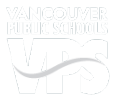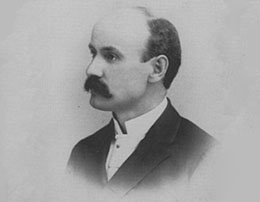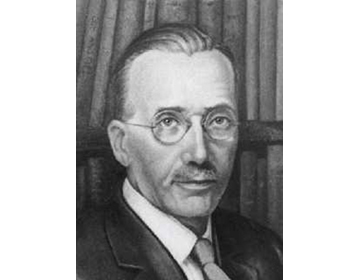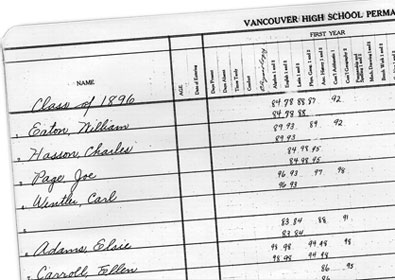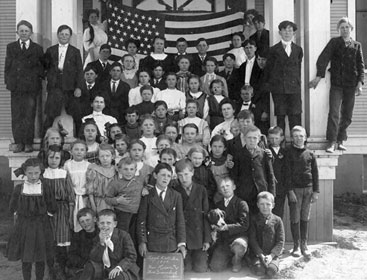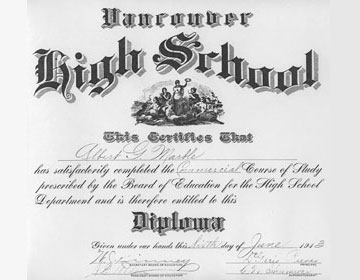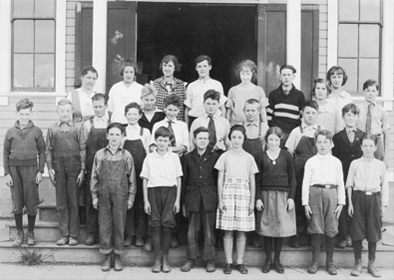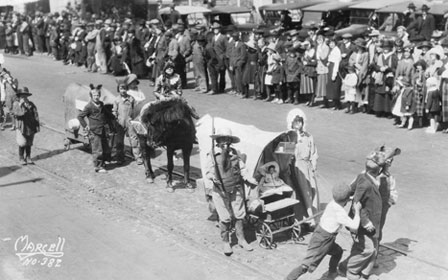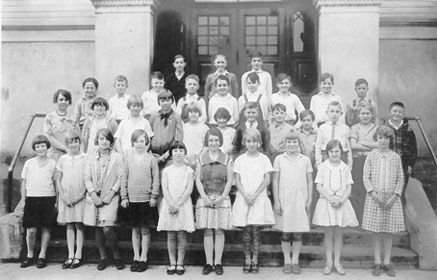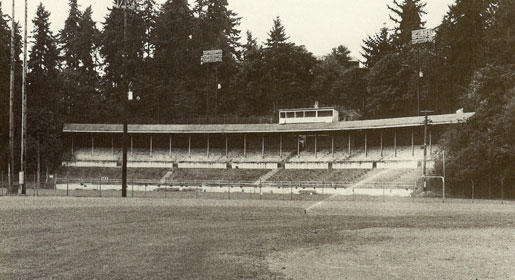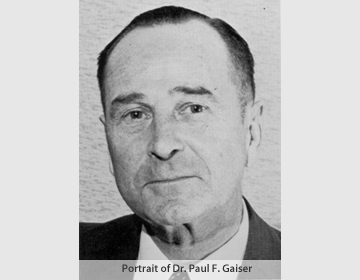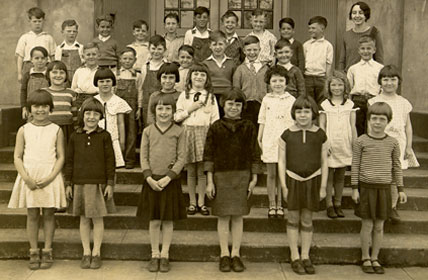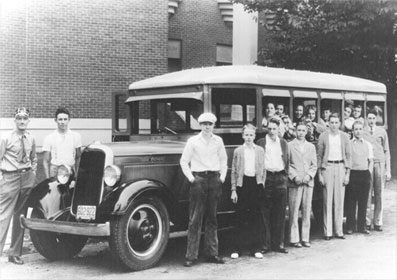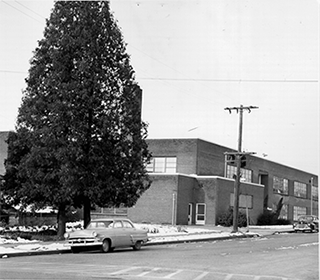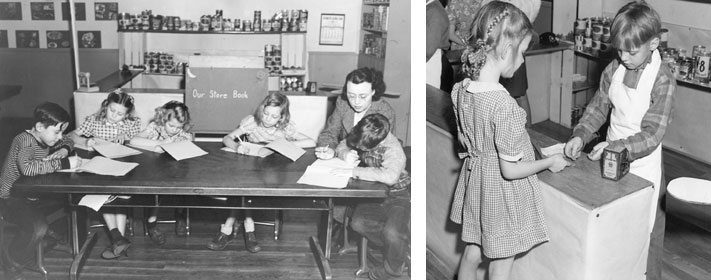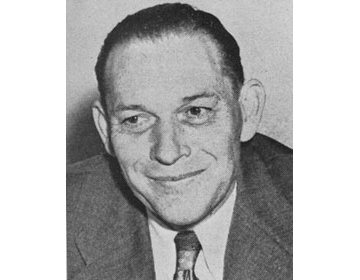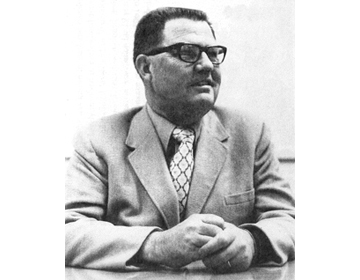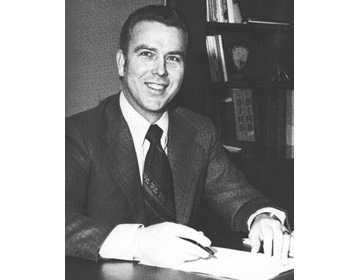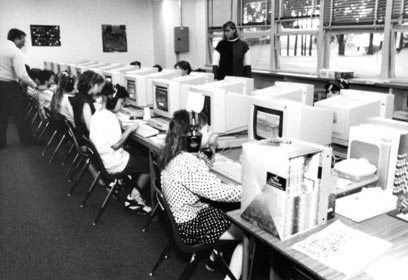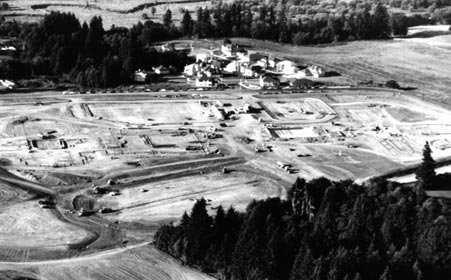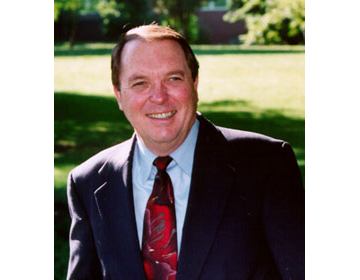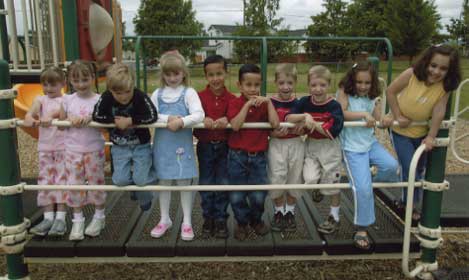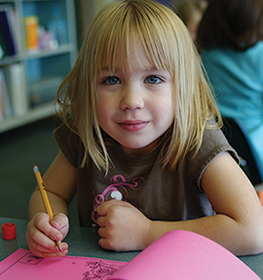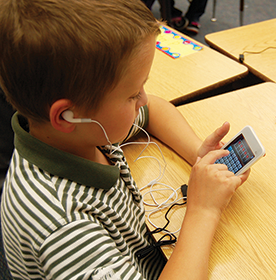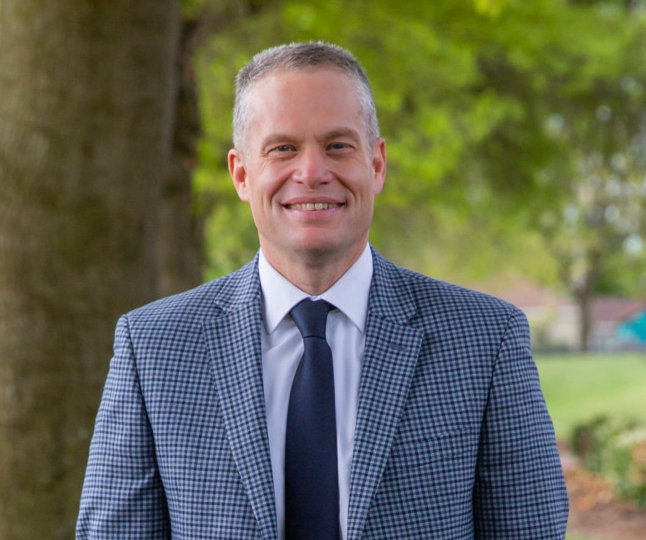Our story
Vancouver School District was formed in 1852.
Historic
The first school in the Northwest was established right here at Fort Vancouver for the Hudson’s Bay Company in 1832. Vancouver School District was formed in 1852. Vancouver School of Arts and Academics is located in the building that was the second junior high school to open in the state of Washington.
Groundbreaking
Kaiser Shipyards operated in Vancouver to support the efforts of World War II. As families streamed into the community, schools were built as quickly as possible. In the 1990s, a major rebuilding effort replaced or renovated those schools from the 1940s. Computer labs opened, and fiber optic networks connected schools.
Innovative
Vancouver Public Schools pioneered programs of choice. As a pilot site for National Teacher Certification, the district produced seven of the first nationally certified teachers. The National School Boards Association selected Vancouver as a technology visitation site three times—in 1993, 1999 and 2013. Thanks to a community-approved technology levy, students in grades three through 12 will have one-to-one digital learning tools by the year 2017.
Visionary
Over the years we’ve inspired, challenged, urged, supported and charged into unexplored territory. In concert with an informed, engaged community, we’ve developed plans that have produced incredible results. We continue to look ahead.
Our mission
Inspiring Learning.
Growing Community.
Each Student, Every Day.
Historical timeline
Take a step back in time with our interactive historical timeline! Do you have historical information to share? Please email us.
Vancouver School District was formed. The commissioners divided the county into six school districts, with Vancouver district designated as No. 6. Later, Vancouver became No. 37.
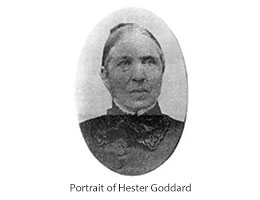
Salmon Creek School was founded by Hester Goddard. In early 1855, residents built a 12- by 14- foot log cabin, Hester was the teacher.
Minnehaha School District’s first schoolhouse was built of logs on a donated land claim
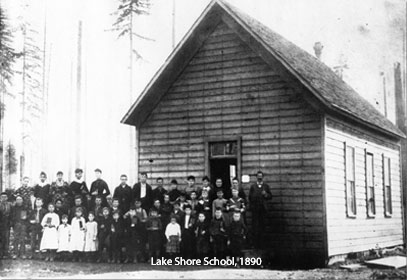
Lake Shore School District dates back to the early 1880s. It wasn’t unusual for children to get distracted by pigs rooting and grunting under the building. A new Lake Shore School was built in 1894 or 1895
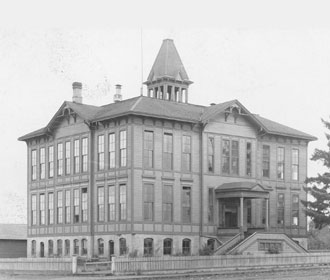
Vancouver voters passed a levy, with a vote of 208 to 13, to build a new public school. Central School was built on 13th Street and Franklin. Central School was erected that year at a cost of $22,000.
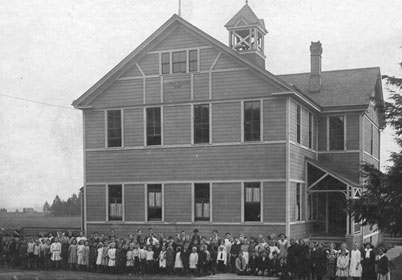
The first Harney School was erected and named for Lt. General William S. Harney, commander of Vancouver Barracks. The building had four outside entrances, and girls and boys entered through different doors. In 1902 students raised money to buy a bell. Sometimes the bell was pulled too hard and would turn over. Then a youngster had to climb a ladder to the belfry and turn the bell around.
Vancouver held its first graduating ceremony, One thousand people turned out to celebrate the event with a banquet and program. Twelve students from Central High were in the first graduating class.
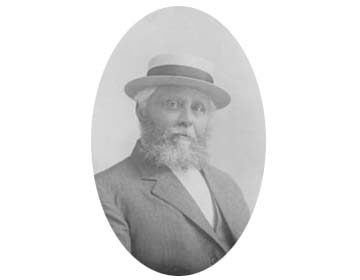
Patrick (Paddy) Hough becomes principal of Columbian School. Hough demonstrated a sincere affection for each pupil. He passed on to his students a deep and abiding love for learning. For him, each paper he marked was a window into a child’s mind. Paddy’s spirit lives today at Hough Elementary School. Students annually participate in the Paddy Hough Parade on March 17 in honor of Paddy Hough’s birthday.
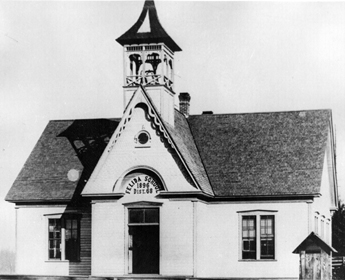
Felida School District was established. The original school still stands on Northwest 36th Avenue.
Walnut Grove School District was established with 27 students in a one-room school.
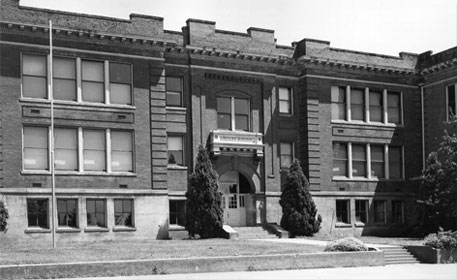
Vancouver’s first brick schoolhouse, Arnada Elementary School, opened in 1910 on H Street between 25th Street and East Fourth Plain. The name was derived from the names of three Vancouver women: Margaret Ranns, Anna Eastham, and Ida Elwell, whose husband platted the Arnada Park Addition. The building was renovated in 1952-53 after the fire marshal had declared it unsafe. It continued as an elementary school for seven years, then as an annex to Shumway Junior High. It was demolished in 1966.
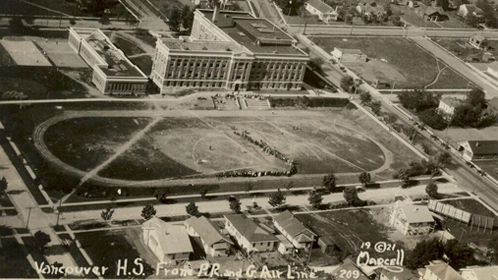
After enrollment in Vancouver schools increased 10 percent a year for six years, voters approved a $100,000 bond election to build a new high school on the corner of 26th and Main. Vancouver High School, a two-story, red brick building, opened March 3, 1913. The first graduating class had 44 students.
Patrons of Washington Elementary School organized the Washington Community Club in 1921. The club organized and equipped the first elementary school cafeteria. Various women in the community scheduled themselves as cooks. Prices for lunch were rarely more than 10 cents, because neighborhood gardens and orchards furnished much of the food.
From 1921 until at least 1962, the old school bell at Lincoln Elementary School rang to announce the end of play time. The hand bell was originally rung by Mrs. Viola Allen, Lincoln’s first teacher in 1921 who became the first principal in 1924. As the bell rang, the children entered the building marching to its rhythm. Later, student body presidents used it to open assemblies.
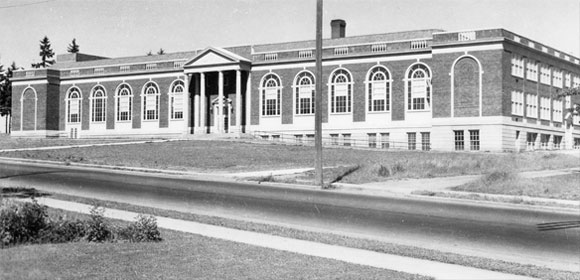
Vancouver was the second district in Washington to build a junior high school. It was the vision of Charles Shumway, 35-year superintendent of Vancouver School District. On August 28, 1928, the board took Shumway to the construction site and unveiled the inscription cast in concrete across the school’s front entrance. The superintendent stood there speechless and with tears in his eyes as he read Shumway Junior High School. Shumway is now the home of Vancouver School of Arts and Academics.
DeGaris Reeves appointed superintendent.
World War II era (1943-45) hit Vancouver Public Schools like an explosion. The Kaiser Shipyards brought workers and families from all over the country. Student enrollment nearly doubled. Before the war was over, Vancouver had added Ogden Meadows High School, McLoughlin Junior High School, and MacArthur, Marshall, Lieser, Fruit Valley, and John Rogers elementary schools.
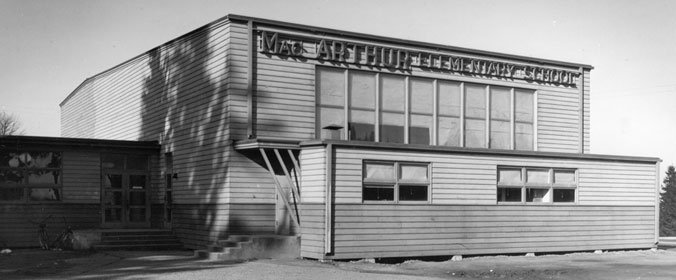
During the high-growth World War II years, MacArthur Elementary School was built south of the intersection of MacArthur Boulevard and Blandford Drive. Named in honor of General Douglas MacArthur, the school opened in the fall of 1943. As the population continued to soar, more space was added in 1943, 1945, and 1948. The 1957-58 school year was the last year of operation for MacArthur Elementary. It was torn down in 1959.
When Fruit Valley Elementary School opened in 1944, the parents’ first order of business was to form a PTA. Concerned for the children’s health, the PTA furnished cod liver oil. In 1948, the 136 members fought for a blinker light at the school crossing. In 1955 the PTA and the school won the Mayor’s Award for distinguished service.
Ogden Meadows Junior High was constructed in 1944 on 12.15 acres of land lying northwest of Northeast 18th Street and Northeast 65th Avenue. The cost of the building, which contained 26,972 square feet, was $109,463. The school opened in the fall of 1944 with James D. Miller as principal.
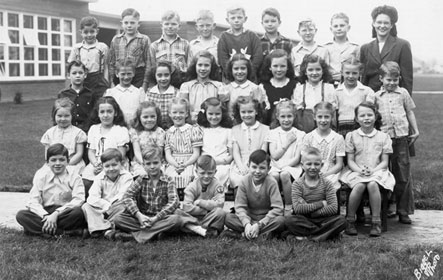
When John Rogers Elementary School opened its doors in the fall of 1945, it was known as the Fourth Plain Village School. It was built to help relieve overcrowded Washington School. During its first year, the art teacher and older students painted a mural of Washington state during Gov. John Rogers’ lifetime. Rogers closed as an elementary school in 1992 and then housed several other schools during construction projects, as well as district offices.

Ogden Meadows Junior-Senior High School
In 1945, 15 additional classrooms were added to the building at a cost of $147,978. On August 14, 1945, the school board designated the school as a junior-senior high school. During the 1945-46 school year the building housed students of grades seven through eleven with senior students matriculating to Vancouver High School. For the 1945-46 school year Julian Karp was principal, assisted by Mrs. Enes Dalton, girls’ advisor, and William D. Lothspeich, boys’ advisor.

For the 1946-47 school year, Ogden Meadows became a full-fledged high school consisting of grades ten, eleven and twelve. The first annual commencement exercises were held on June 5, 1947, with 74 students qualifying for diplomas.
On July 21, 1948, Ogden Meadows High School was virtually destroyed by fire. Later a 16-year-old boy confessed to arson.
Kindergarten and first-grade girls at Minnehaha Elementary.
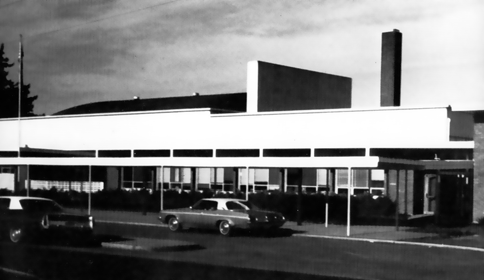
In 1953 Lewis Junior High School became the third junior high in the district. The school first opened in 1943 as Bagley Downs Elementary, but was renamed Lewis and Clark Elementary School in 1946. Soon after, it was shortened to Lewis Elementary School. After serving as Lewis Junior High for 33 years, the school closed in 1986. The remodeled building is now the site of the Jim Parsley Center, housing administrative offices, a community center, the Free Clinic, and the Boys and Girls Club.
Built in 1955, Ben Franklin Elementary School’s original colors were maroon and gray, with the cougar as a mascot. But in 1972-73, the student council voted to change the colors to red, white and blue. The name Patriots was taken in keeping with the historic name.
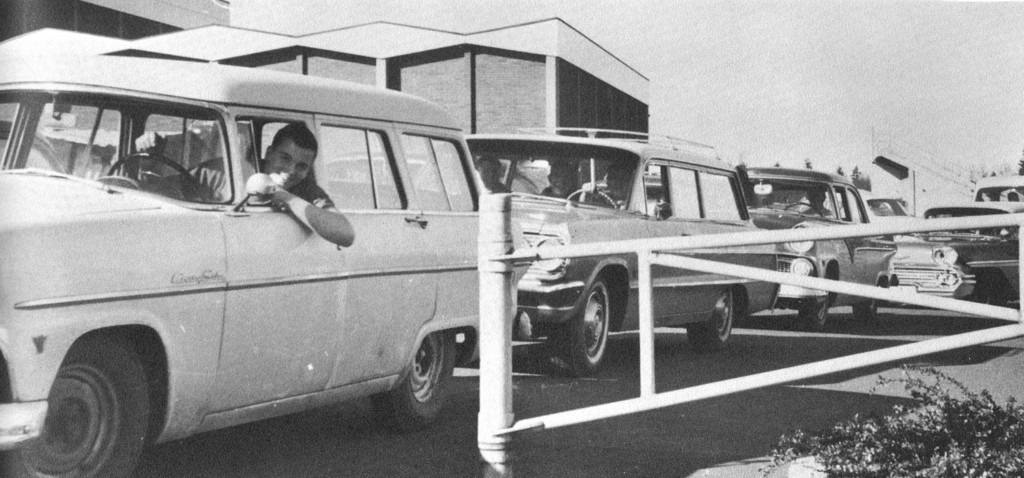
Columbia River High School opened on Sept. 4, 1962. The school operated as a junior high and high school until 1965 when Jason Lee Junior High opened.
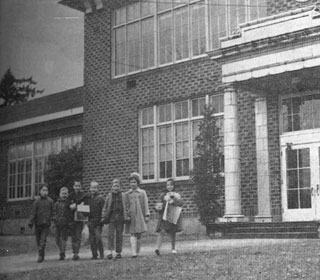
A group of Washington Elementary School youngsters leave their classes for the last time Friday, January 8, 1965. The school was ordered closed by district 37 officials after word that the structure would be unsafe if high winds or earthquake should strike.
The Sound of Music was the fourth major Broadway musical presented by the music department of Vancouver Public Schools. The success of the musicals was attributed to the high degree of talent of Vancouver students.
When Dwight D. Eisenhower Elementary School was built in 1970, it addressed a critical population problem in north Vancouver. It also gave shape to the open concept of teaching. Three round classroom clusters had movable partitions that could open instructional areas for team teaching.
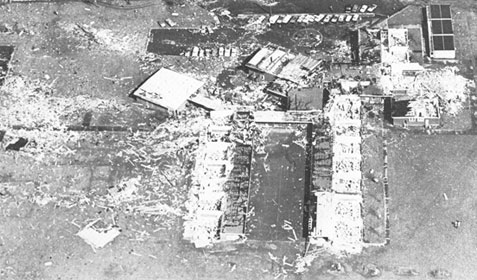
On April 5, a tornado hit Peter S. Ogden Elementary, destroying the 1955-era building and sending 90 students and three staff to the hospital. Students in the gym were literally blown down the hall or outside the building. The roof was torn off the media center, leaving a heap of rubble. Students from nearby Fort Vancouver High School rushed over to help.
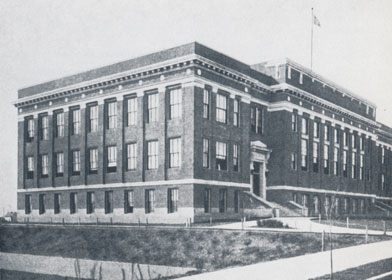
Demolition of the old Fort Vancouver High School, circa 1913, begins in 1972-73, nearly 10 years after the building was declared unsafe. Tearing down the old high school was unpopular with many citizens, who filed a court order to stop it. A judge overruled the order. Final stages of the demolition are completed in 1977.
Gaiser Middle School opened as a junior high school January 21, 1974, serving the north end of the district. From September until January, Gaiser staff and students double shifted at Jason Lee Middle School while the new building was being finished. It was named for Dr. Paul Gaiser, superintendent of Vancouver schools from 1934 to 1952.
Pan Terra School opens as an alternative option for students in September 1974. Pan Terra School became Vancouver Personalized Learning Center in 1997. A new building, renamed Lewis and Clark High School, opens in 1998.
The school continues to provide personalized education, to this day, renamed in the fall of 2013 to Vancouver Flex Academy reflecting a shift from an alternative school to providing a program of choice for Vancouver students.
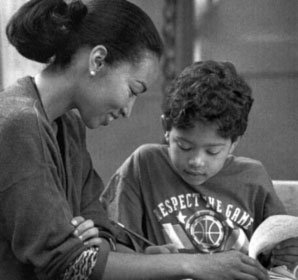
HOSTS (Help One Student to Succeed) begins when Vancouver teachers develop the concept of a reading lab with volunteer mentors from the community and a single reading instructor. The HOSTS organization becomes a for-profit corporation in 1984 and expands to hundreds of communities around the U.S.
Sacajawea and Felida elementary schools open in 1978.
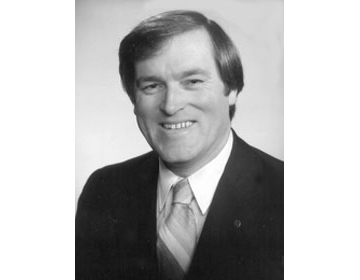
Dr. James Parsley is named superintendent. During his 22-year career, Parsley leads the district to national recognition for its accomplishments including technology in the classroom, magnet schools and programs of choice, partnerships and patron donations, and 35 construction or renovation projects.
Vancouver Public Schools is named a National Lighthouse District by the U.S. Department of Education.
Following several years of research and planning, the school board approves the move of 9th-graders from junior high to high school. The transition from junior high to a 7th- and 8th-grade middle school begins in the 1986-87 school year.
Vancouver School District Foundation is established in 1988. The Foundation’s mission is to provide basic needs assistance, enrichment opportunities and other support for students.
Small Children Need Big Friends is launched. The goal of the partnership program is to enlist the help of community agencies and organizations in removing obstacles to student success.
The Vancouver School Board adopts a strategic plan to prepare the school system for the 21st century. The plan has four goals: to revitalize the curriculum; to invest in high-quality staff; to improve facilities; and to develop community partnerships.
Voters approve a $45 million dollar bond measure. This first phase of the district’s long-range facilities plan focuses on consolidation of small, outdated elementary schools and construction of new schools to accommodate enrollment growth in the north end.
Vancouver schools begin to develop and implement annual School Improvement Plans.
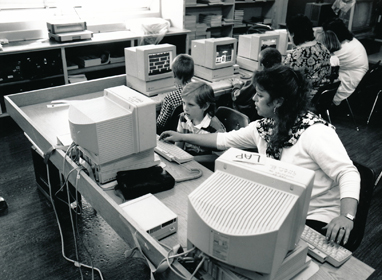
The first computer lab is piloted at Washington Elementary School. The pilot’s success in raising student achievement leads to computer learning centers in all elementary and middle schools.
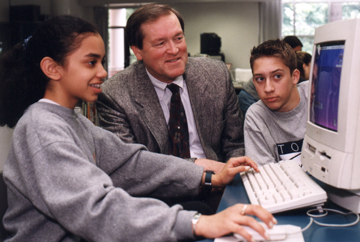
The National School Boards Association honors Vancouver Public Schools as one of three pace-setting districts in the country for the use of educational technology.
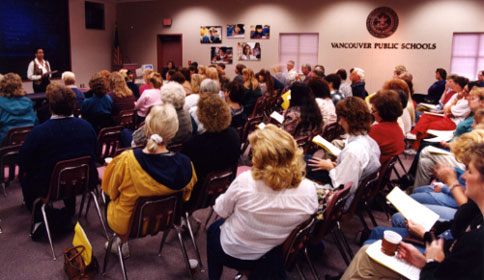
The Center for Educational Leadership opens as the district’s professional development center. Vancouver Public Schools is one of 24 sites in the nation and the only district on the west coast to be a field test site for National Board Certification for the National Board for Professional Teaching Standards.
Sixth-graders are added to middle schools in 1992-93. The transition affects 1,400 students and involves realignment of curriculum, staffing, boundaries, building capacity, logistics, and student and parent preparation.
Vancouver Public Schools hosts a site visit of the National School Boards Association’s Institute for the Transfer of Technology to Education. The event draws educators and school board members from throughout North America.
Leslie Durst donates $1 million to support arts education in the district, including the proposed arts and academics magnet school.
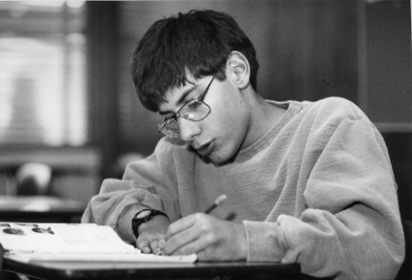
Vancouver School District began offering the International Baccalaureate (IB) program, a rigorous pre-college course of study for highly motivated high school students. Located at Columbia River High School, IB is a magnet program open to students throughout the district.
Voters approve a $135 million bond measure. The second phase of the district’s long-range facilities plan focuses on replacing World War II-era schools, building the new Skyview and Lewis and Clark high schools, and upgrading the existing high schools.
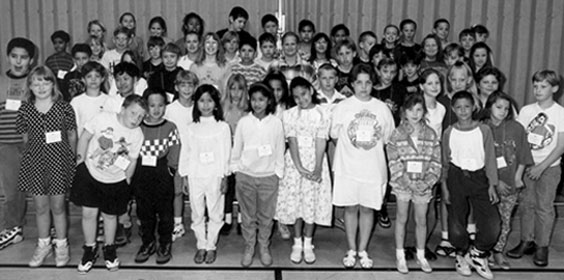
Washington Elementary School’s 60 sixth-graders are announced as the first “I Have Dream” class in Southwest Washington. Local individuals and families each pledge $100,000 over a 10-year period to provide mentoring and support and guarantee college educations for students who work hard.
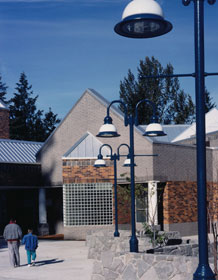
Discovery Middle School opens in 1995 to replace Shumway Middle School, which was converted to an arts and academics magnet school. Discovery earns several national awards for its innovative design elements, including a distributed media center and a “toolbox” area for project-based learning.
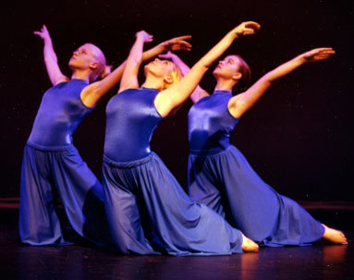
First magnet school opens—Vancouver School of Arts and Academics. The school is one of five selected nationwide to receive a $250,000 research grant from the College Board and the Getty Center for Education in the Arts.
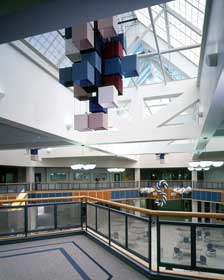
To ease overcrowding in the district’s north end, Skyview High School opens in the fall of 1997. The school’s national award-winning design includes applied learning areas such as marketplace and a food court. Skyview also houses a Science, Math and Technology magnet program.
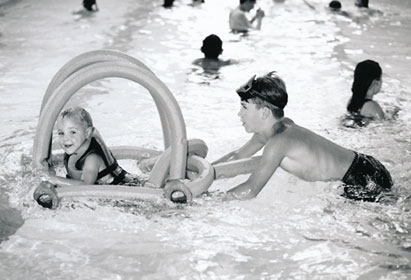
Hough Community Pool opens at Hough Elementary School. Paul Christensen, a local businessman who grew up in the Hough neighborhood, provides funding for construction of the pool, which is operated by the City of Vancouver.
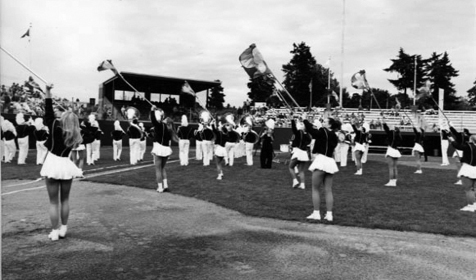
The Propstra Baseball Stadium, located on the Hudson’s Bay High School campus, is dedicated on May 28, 1998. George and Carolyn Propstra donated $1.1 million to build the stadium.
The first Family-Resource Community Center starts at Fruit Valley Elementary School.
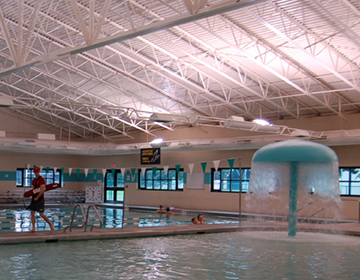
Thanks to a gift of $2.5 million from George and Carolyn Propstra, the Propstra Aquatic Center opens in 1999.
For the second time in the 1990s, Vancouver Public Schools is honored to host a site visit of the National School Boards Association’s Institute for the Transfer of Technology to Education. More than 100 educators and school board members attend to see firsthand how technology enhances learning in Vancouver schools.
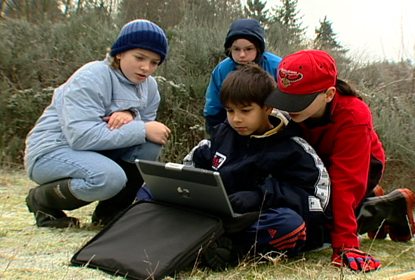
Vancouver Public Schools and Hewlett-Packard Co. announce a new partnership to co-develop technology solutions for personalized learning in a connected community. The venture, called “Cooltown @ School,” includes a pilot project in three classrooms at Eleanor Roosevelt Elementary where every student has a laptop computer with access to assignments and educational resources online.
Voters approve an $87.7 million bond measure to complete a third phase of school construction in the district. Projects include the replacement of six aging elementary schools and the construction of a new middle school.
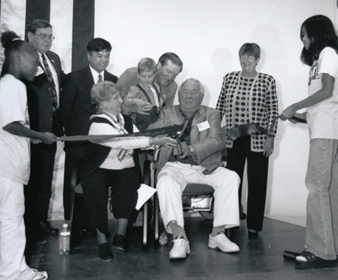
Governor Gary Locke and hundreds of guests attend a ribbon-cutting ceremony for the Jim Parsley Education, Family and Community Center. Located at the former Lewis Junior High site, the center is possible thanks to a $5 million donation from George and Carolyn Propstra. It is named for Superintendent Jim Parsley in recognition of his leadership and advocacy for young people.
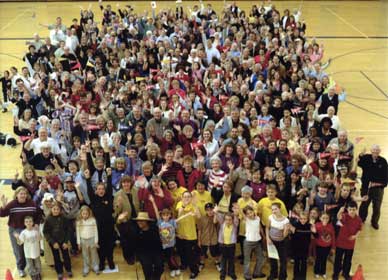
Vancouver Public Schools celebrates 150 years. The district is older than the city of Vancouver and the state of Washington.
Three longtime Vancouver elementary schools——Franklin, Washington, and Hazel Dell——were completely rebuilt and ready for students on September 4, 2004. The three older buildings were closed and demolished during the summer.
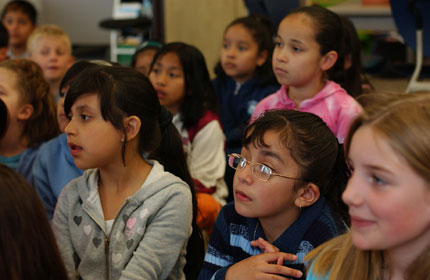
The district’s first Dual Language program (English/Spanish) begins at Sarah J. Anderson Elementary School. The Dual Language Program is a challenging academic program designed to provide instruction to students in two languages—English and Spanish. The goal is to develop literacy in both languages by the fifth grade.
Hudson’s Bay High School turns 50! The school opened Feb. 3, 1956, to become the second high school in Vancouver School District. At that time, the name of the one and only Vancouver High School was changed to Fort Vancouver High School.
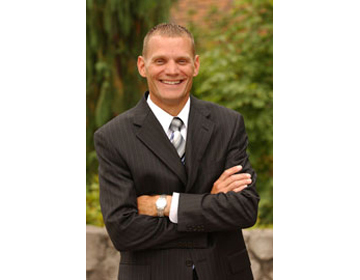
Dr. Steven Webb becomes superintendent and VPS Board of Directors adopts his ambitious new strategic plan, developed in concert with district employees, current and former students, parents and community, agency and business leaders. Over the next five years, Design II leads to expansion of educational program choices, improvements in instructional quality, new applications of technology, growth in early learning opportunities, safety enhancements, and partnerships that mobilize resources and move barriers to learning. Learn more at www.vansd.org/StrategicPlanTimeline
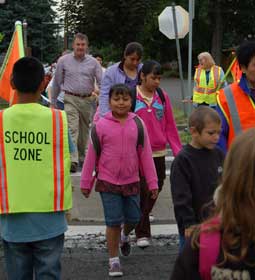
Washington Elementary School starts the Walking School Bus program. Students walk to their designated bus stops and wait for a group of students, volunteers and parents to pick them up. Together the group walks to school. The walking school bus is a program designed to help students get to school safely and arrive on time.
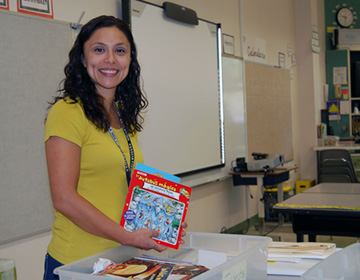
Spanish Immersion Program starts at Harney Elementary. The Spanish Language Learning Program is an academically challenging and enriching program for developing linguistic proficiency in Spanish and English.
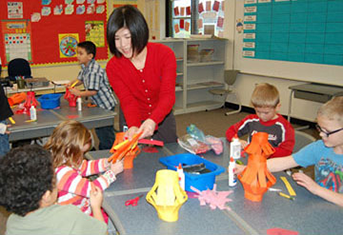
The Chinese Immersion Program begins in the fall for students entering kindergarten at Ben Franklin Elementary School. The Chinese Immersion Program is an academically challenging and enriching program for developing linguistic proficiency in Mandarin Chinese and English.
Read and Play programs offered by Educations Service District 112 increase connections with families with children ages 5 and under.
Former Hudson’s Bay science teacher Dottie Metcalf-Lindenburger goes to space aboard the Discovery Shuttle. The teacher was selected by NASA in 2004 to be an Educator in Space.
Bring Your Own Device (BYOD) pilots begin in some classes at Alki Middle School and Columbia River and Skyview high schools.
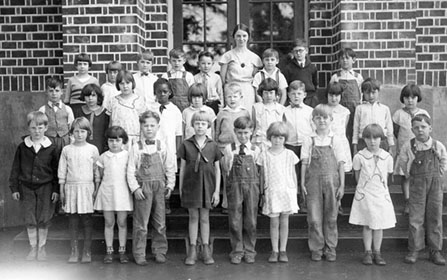
Washington Elementary School marks its 100th anniversary this year. The school opened in 1912 with a one-room portable building on an acre of cleared land at 29th and S streets. The first teacher, Miss Clara McCall, was hired in February 1912 and paid $55 per month.
Vancouver iTech Preparatory, a magnet school, opens with a focus on science, technology, engineering, and math.
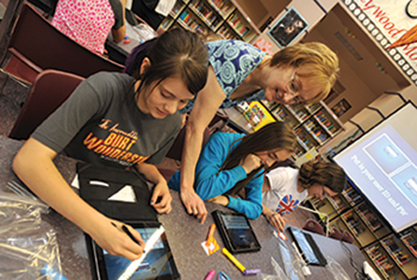
The district passes its first technology levy, with nearly 62.5 percent of voters supporting the implementation of flexible learning environments that feature one-to-one technology. Over the next six years, teachers and every student in grades 3-12 will have access to digital learning devices. Technology levy funds also will provide sustained professional development for teachers, curated digital content, a learning management system, computer lab upgrades, and standard classroom technology updates.
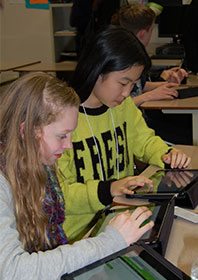
The weLearn 1:1 rollout begins at Alki Middle School, where sixth-graders receive iPads to use at school and home.
The Board of Directors adopted Design II, Chapter 2 the second phase of the district’s strategic plan. The plan reflects the community’s vision for Vancouver Public Schools and intended to guide the district through the year 2020.
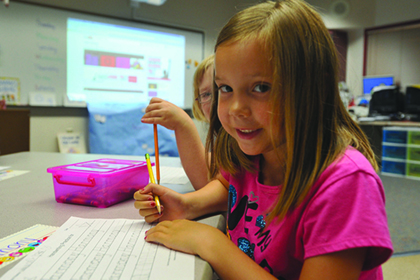
Kindergarten Jump Start, a free school-readiness program, was offer at all 21 elementary schools. The program sets the stage for student success.
The district is one of nearly 50 school districts to earn a District of Distinction award for its network of 13 Family-Community Resource Centers.
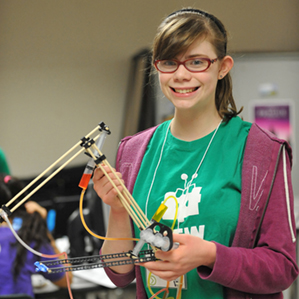
Vancouver iTech Preparatory becomes first VPS STEM Lighthouse School. The science, technology, engineering and math—or STEM—school is one of six statewide designated as STEM Lighthouse Schools by the Office of the Superintendent of Public Instruction.
Along with the honor, each school also receives a $20,000 grant that will promote and develop STEM education, including technical assistance and advice for other elementary, middle and high schools that are creating their own STEM environments.
Thank you, Vancouver, for your continued support of public schools!
Local voters approved a bond measure in February 2017 that will allow the district to build three new schools; replace, remodel and/or enlarge several schools; and provide improvements and updates to all other schools in the district.
Thank you, voters | ¡Gracias, votantes! | Спасибо, избиратели! | Ach kapasen kinisou ngeni meinisin ekkewe aramas re úttút!
The education and operations levy passed with 64.49 percent support and the technology levy passed with 62.65 percent support.
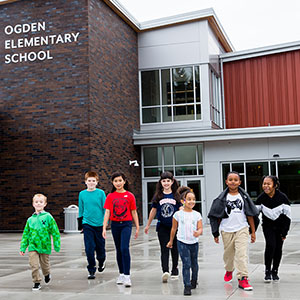
Thanks to a bond measure that voters approved in February 2017, Ogden Elementary School was completely rebuilt. The new school opened on August 27, 2019.
Thanks to a bond measure that voters approved in February 2017, Vancouver iTech Preparatory school was rebuilt. The new school opened January 2020.
Gov. Jay Inslee directed all Washington state public schools to close to help our state and nation combat the spread of the coronavirus (COVID-19).
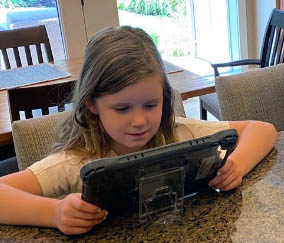
Remote learning 2.0 kicks off the 2020-21 school year
The school year began in full remote learning for all students, based on school reopening guidelines issued by the Washington Department of Health.
Five new schools – Marshall, Truman, Martin Luther King Jr., Vancouver iTech Preparatory and McLoughlin – were completely rebuilt. Thanks to a bond measure that voters approved in February 2017.
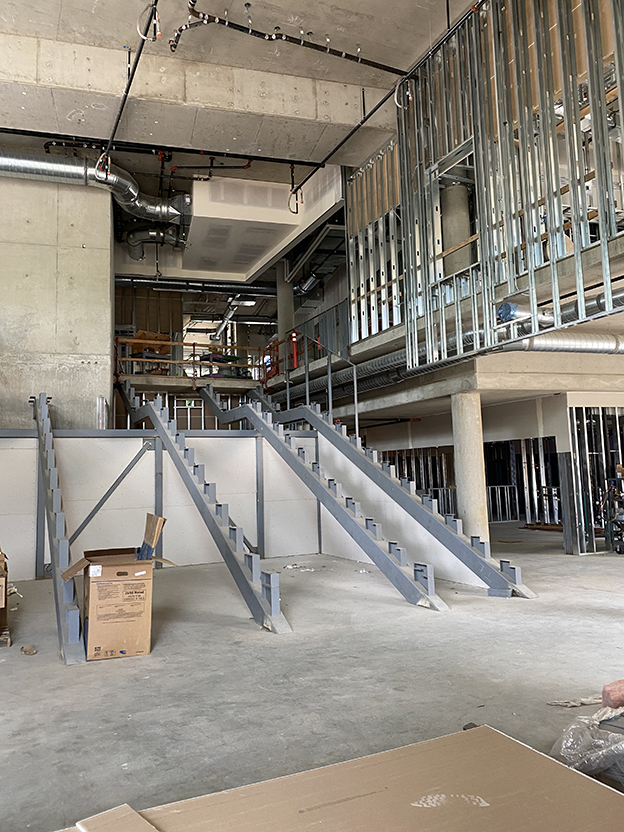
Planning for the opening of Vancouver Innovation, Technology and Arts Elementary School is beginning to take shape. The new elementary school is set to open next fall; however, due to an enrollment decline across the district, the school is going to operate for the first year as a learning and teaching lab.
Two new elementary choice schools
We are excited to announce that for the 2023-24 school year two new elementary schools are opening – Vancouver Innovation, Technology and Arts Elementary (VITA) and Ruth Bader Ginsburg Elementary (RBG). Both schools will be elementary choice schools.
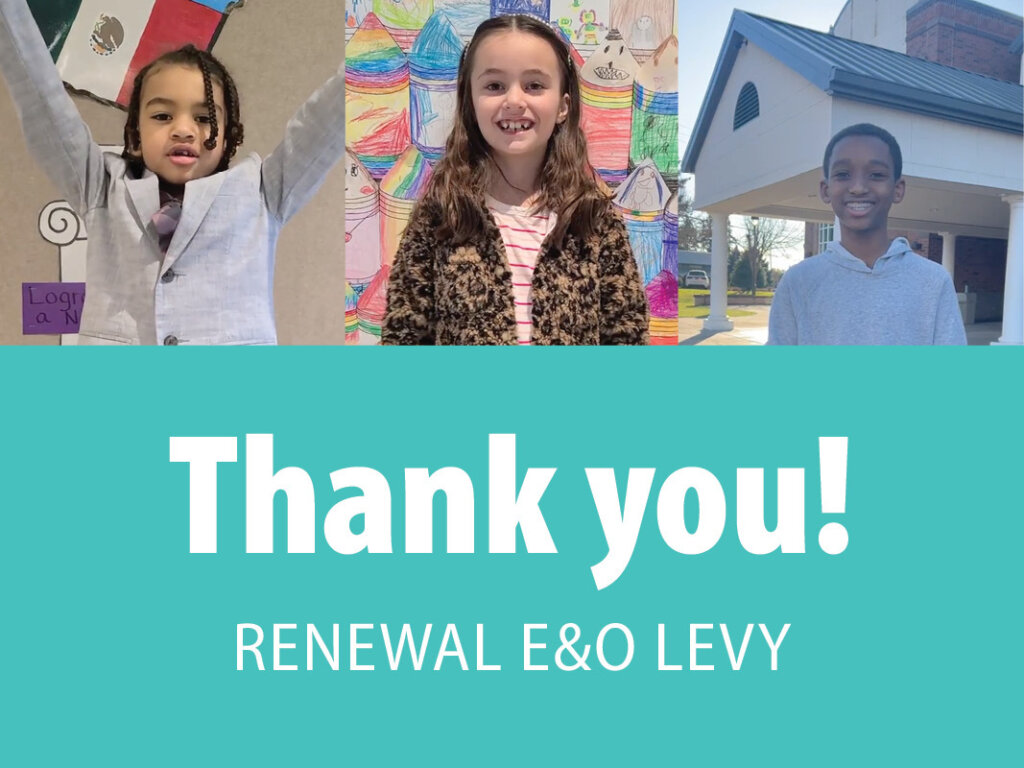
Thank you, voters
The education and operations levy passed with 57.12 percent support. Thank you for always putting our children first.
Now, hear it from the students you’ve impacted directly:
